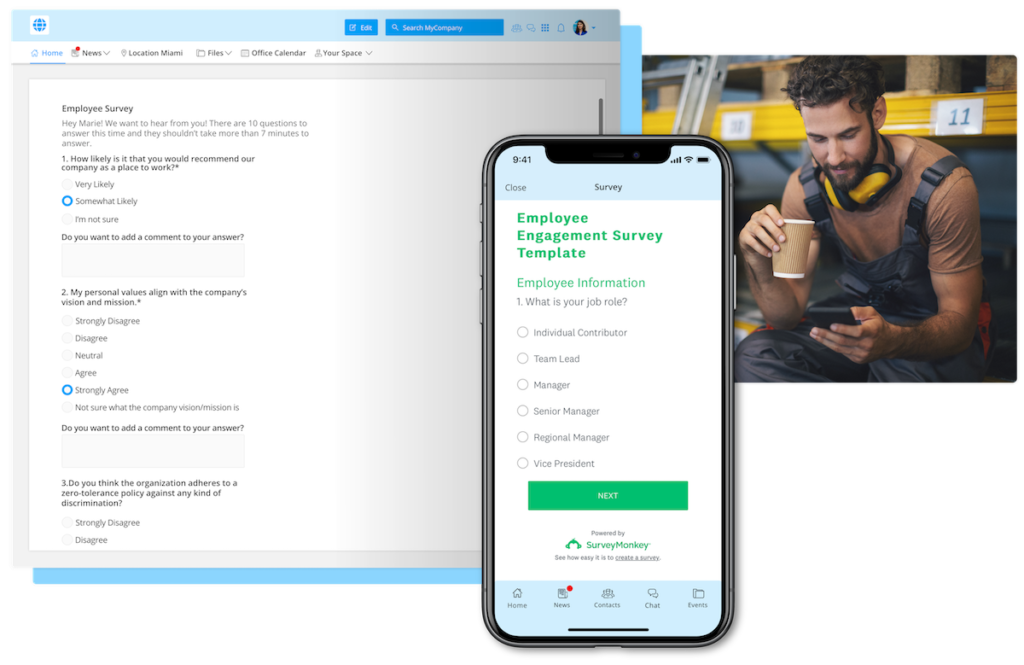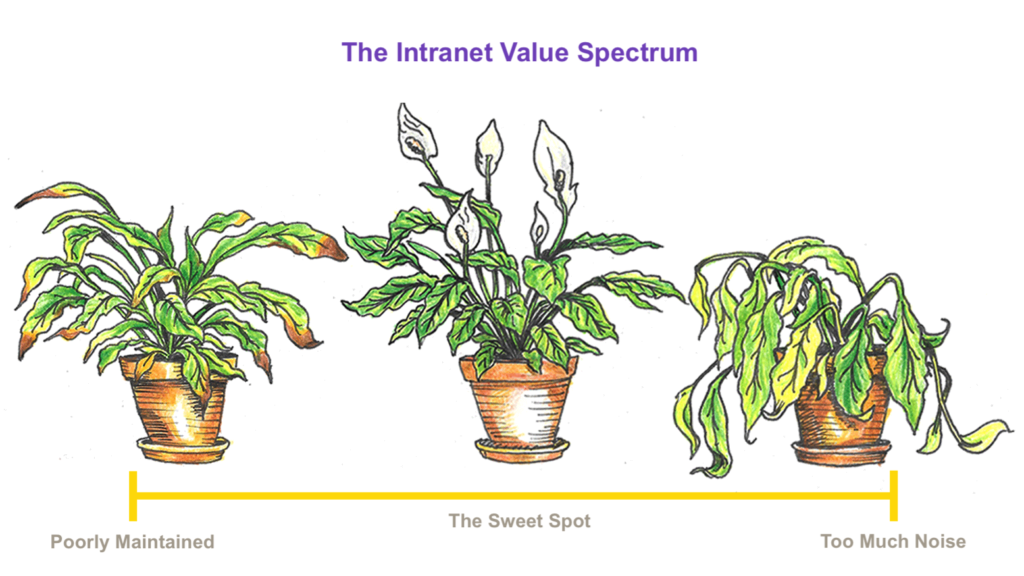There’s a common question circulating in corporate IT blogs and LinkedIn posts these days: “Are Intranets Dead?” Citing outdated intranets and practices that have struggled to find relevance with employees, these critics claim that businesses are entering a new, post-intranet era.
But reports of this wholesale death have been greatly exaggerated. Intranets are fundamentally changing all the time, and as such, one crucial word has been omitted from these headlines that bears correcting: “Traditional intranets are dead. Modern intranets are alive and well.”
What’s Really Wrong with Your Intranet?
In the past few years, there has been a growing divide within digital workplaces. On the one hand you have traditional intranets, many of which follow the antiquated “destination site” model, while on the other, collaboration software like Teams and Slack boom outside of the intranet model.
Given this disparity, it’s easy to see why there are those so eager to discount the relevancy of an intranet — it’s easier to just ping someone on Slack or find them in person to locate a piece of information rather than slog through a mismanaged intranet.
When done correctly, however, engaging modern intranets have a proven ROI for a business. The qualities that define an intranet as “useless” or “unorganized” in the workplace are generally not intrinsic, structural flaws, but results of human error and neglect.
Common Intranet Engagement Barriers
1. Not Employee Focused
At many companies, a mismanaged intranet is quickly becomes a content repository as opposed to what it should be: a capable employee engagement platform.
Modern intranets focused on engagement address the human needs of an organization, not the purely logistic. In addition to storing useful information, they enable employees to hear and be heard by management and their peers. This promotes a culture of transparency and openness, building trust and loyalty, and increasing employee engagement.

While it’s difficult to put an exact figure on the value of creating a more engaging employee culture, look at something like retention to put things in perspective.
With better corporate culture — aided by a successful modern intranet — employee retention increases dramatically, consequently reducing turnover costs. For entry-level employees, it costs between 30–50% of their annual salary to replace them; for mid-level employees, the cost is around 150% of their annual salary; and with higher level or specialized employees, the average is about 400%.
Having trouble identifying areas of improvement? Just ask.
Employee surveys provide an excellent opportunity to get direct feedback from your entire staff, allowing you to pinpoint specific areas in your intranet and organization that could use improvements.

2. Poorly Organized
What should be an accessible one-stop shop of productivity can easily become a cluttered mess of information. Busy employees will quickly abandon an intranet and default to different sources of information. According to a survey by Forrester Research, just 43% of enterprise employees access an intranet every day.
Worse, 35% don’t even use their intranet on a monthly basis.
These intranets are “junk drawers,” virtual dumping grounds for content that nobody wants to sift through. Like a junk drawer, they’re disorganized and full of things you can’t be bothered to place correctly, even if that place is the trash.

What’s more, intranets constantly run the risk of creating information silos — restricted areas of content that require employees to proactively review different departmental sources to discover updates. Basically, employees have to waste time navigating between silos, looking inside before they know if there’s anything of interest to them.
Aimless searching can occupy nearly 20% of an employee’s time. (McKinsey)
With smarter search capability and siloed information reduction, on the other hand, a searchable record can reduce this wasted time by as much as 35%.

At its core, an intranet should be a collection of knowledge that connects teams across locations and departments. This has been especially important during and post Covid-19. As a result, half of executives (55%) expect to extend options for most of their office workers to work from home at least one day a week, up from 39%.
If organized properly, anything that an employee needs, whether it’s a paid-time-off form or the lunch menu should be readily accessible. However, this can only happen if the content on the intranet is up-to-date, organized, and detailed.
3. Too “Noisy”
Companies with poorly organized “junk drawer” intranets tend to view their intranets like they would a potted plant on their desk: mainly decorative, with a vague intention of improving the workplace. And it’s easy to kill both. Too little attention and the intranet withers and dies as a result of poor organization and lack of focus.
On the other hand, employees also frequently report being overwhelmed by their intranet. They constantly have to filter out what’s applicable to them and sort through the noise. In this case, the intranet plant is receiving too much water — or noise. It drowns and dies due to inaccessibility and a lack of task segmentation.

Often times, much of this “noise” constitutes the collaborative or social aspects of an intranet: virtual team rooms to access tools such as wikis, blogs, and online forums. Despite the aforementioned divergence between social networks and collaborations tools, these functions have remained largely unchanged and unengaging for the past decade.
Turn down the volume!
Tools such as Slack and Microsoft Teams have shown how social-driven collaboration thrive outside of the intranet umbrella. Not only is noise reduced, but users can exercise their ability to decide whether or not to integrate external tools and control how deeply they wish to stay up-to-date. Intranet creators can then focus on their core function of creating a branded digital entry door for the organization for employees on their way through the employee journey.
Simplifying and segmenting the content that remains is of secondary but significant importance. Dividing intranet users into broad groupings based on shared characteristics (e.g., by department, location, or role) must be done without creating information silos.

So, what do you think? Are intranets dead? Feel free to comment and let us know about the health of your intranet.





